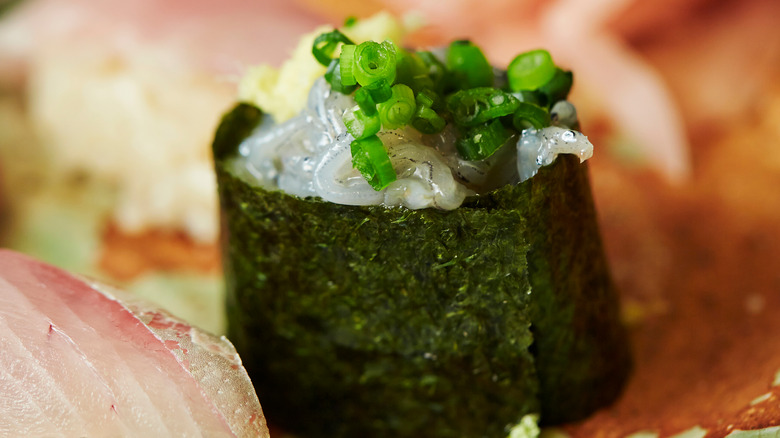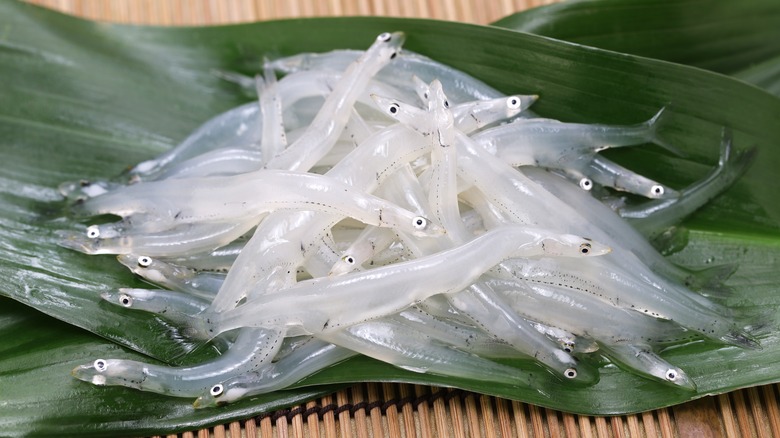What Makes Icefish Sushi So Unique?
If trying sashimi gives you pause, you may struggle to eat sushi that is staring back at you. Such is the case with sushi recipes that include shirauo, small eel-like creatures that are around the length of a finger. These little baby eels with eyeballs offer a texture that is soft and squid-like. The taste can be bright, followed by bitter notes that might be likened to Campari. At one point in time, these eerie-looking creatures were considered premium ingredients.
Shirauo, also called Japanese icefish, can be found on the eastern side of the Korean Peninsula and throughout Japan. They live in brackish river waters and estuaries, and their spawning season occurs sometime in February and lasts until May. These fish are what can be described as neoteny, creatures that remain the same in appearance and shape even in their mature form. While shirauo may not be on the common list of the best types of sushi, it provides a unique eating experience.
How to enjoy icefish
Bowls of these immature smelts can be admittedly off-putting, but the bite-sized pieces are sought-after delicacies by some sushi connoisseurs. The clear fish offers a combination of sweetness and a touch of bitter flavor. Though the pieces are slick and smooth, biting into one of these yields a snappy pop as if you're chowing down on arrowroot noodles. The translucent fish are typically grouped together and set on top of sushi rice to be presented as nigiri. You'll find these icefish served with oboro and a quick swash of nikiri, a sweet soy sauce.
Because the raw fish is sticky and the boiled pieces fall apart, even experienced sushi chefs may have some difficulty using the ingredients. To prepare the tiny fish, the pieces are salted, steamed, and chilled. After the fish are steamed, their appearance changes from opaque to more white in color. When these fish die, they turn white as the freshness diminishes. This is why the fish is named shirauo, which is Japanese for white fish. Some chefs add salted cherry leaves to the fish, both as an aesthetic garnish of energetic color and as a light, fresh addition of flavor.

